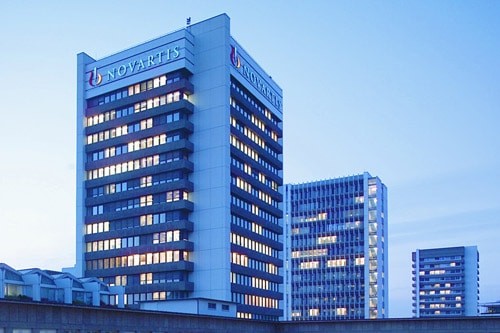
Novartis has unveiled its long-term growth strategy, highlighting more than 25 ‘potential blockbusters’ at its R&D event in London today.
Among these growth products are a wealth of emerging assets, which are due to be advanced into pivotal trials in the next few years. According to the Swiss pharma, these assets are being prioritised because they address areas of significant unmet need. This includes:
- Iscalimab (CFZ533), a monoclonal antibody (mAb) which has the potential to become the standard of care in transplants, as well as demonstrating a positive proof-of-concept in Sjögren’s syndrome, which can cause rheumatic autoimmune diseases
- LNPO23, which is in development for three rare renal diseases as well as haematology for first-line paroxysmal nocturnal hemoglobinuria (PNH), with the first results due in 2020
- MBG453, a first-in-class anti-TIM-3 mAb which is currently advancing into a pivotal phase 2 programme in myelodysplastic syndrome. Phase 1 data is due to be presented at the upcoming ASH 2019 conference
- TQJ230, an antisense oligonucleotide it licensed from Akcea Therapeutics in February, which reduces Lp(a), a currently untreatable risk factor for cardiovascular disease – an outcomes trial of over 7,500 patients is planned to begin in 2020.
The drugmaker also has a promising late-stage pipeline of phase 3 readouts and launches that it has said will drive near- to mid-term growth. These launches include:
- Ofatumumab (OMB157), a novel treatment for relapsing multiple sclerosis which has produced new analysis demonstrating a reduction in confirmed disability worsening
- Fevipiprant (QAW039), a new oral therapy for asthma
- Lu-PSMA-617, a radioligand therapy for prostate cancer which has phase 3 readouts due in the near future
- Ligelizumab (QGE031), a new treatment for chronic spontaneous urticaria, which has phase 3 results and is due to be filed with regulators by the end of 2021
- Canakinumab (ACZ885), an IL-1 beta mAb for non-small cell lung cancer, which has trials being recruited in both the first- and second-line settings and plans for regulatory filings in 2021.
Novartis also plans to expand its established brands into new indications, including its blockbuster psoriasis treatment Cosentyx (secukinumab) which it hopes to move into an additional ten indications over the next ten years.
It also has plans to expand wet AMD therapy Beovu (brolucizumab-dbll) and HER-2 breast cancer treatments Piqray (alpelisib) and Kisqali (ribociclib) into additional indications to help drive growth.
Rounding out the highlights from the R&D day was the announcement of around 90 new molecular entities (NMEs) that are emerging from the Novartis Institute for BioMedical Research, which creates a diverse early-stage portfolio for the company.
This means that Novartis has plans to make 80 significant submissions to regulators for drug approvals from 2020-2022 in the US, Europe, Japan and China.
According to Reuters, this submission figure has increased from the 60 submissions the company reported that it was planning for the 2019-2021 period last year.

Novartis’ Vas Narasimhan
“Our operational focus is beginning to show results including accelerating timelines, reducing costs and improving productivity without compromising quality,” said Novartis CEO Vas Narasimhan (pictured above).
“We look forward to delivering new transformational treatment options to patients and continuing to reimagine medicine to address some of the world’s greatest unmet healthcare needs,” he added.




